10% off your next stay!
Join the Saintlo adventure and enjoy 10% off your next stay in Montreal and Ottawa.
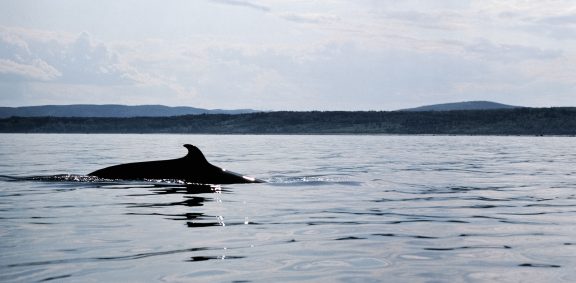
In this article:
Do you dream of seeing a whale leap out of the water or a seal sunbathing? Good news: Quebec is one of the best places in the world to observe these marine mammals in their natural habitat. Whether you’re a hiker, a kayaker or you like a good cruise, there are a plenty of ways to experience the magic.
Before you set off, here are a few details to help you choose where to go, when to go there and how to enjoy a successful experience that’s respectful to the animals.
Every year, thanks to its cold currents rich in plankton and small fish, the Saint Lawrence attracts a dozen species of whales, including the beluga, the minke whale, the fin whatle, and the largest animal in the world: the blue whale. When it comes to seals, you can expect to see harbour seals and grey seals sunbathing on the rocks.
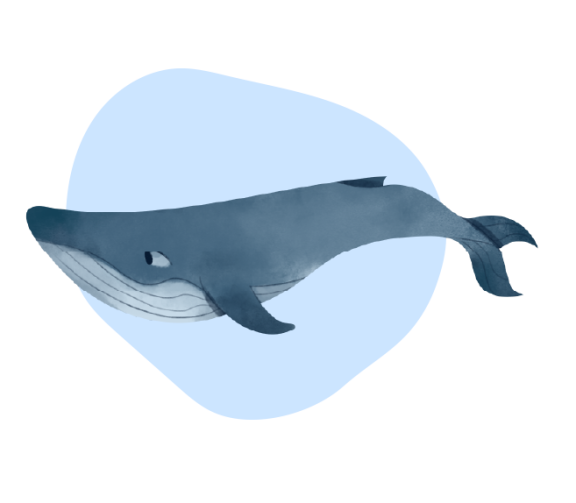
Whale-watching season runs from May to October, peaking toward the end of the summer. The right time depends on the species you hope to see and the area. For the best luck, shoot for excursions in the early morning or end of day when the water is calm. Find out here the times and places you can see different species.

If you prefer to stay on land, there are several free places to observe whales without boarding a boat. Pack yourself a picnic and binoculars and enjoy the show.
Tadoussac is the most famous place to watch whales in Quebec. It’s also the starting point for the Whale Route, which stretches from there to Blanc-Sablon. This quaint town is a little less than 90 minutes from the La Secousse youth hostel in La Malbaie.
From a twenty-minute hike on the Pointe de l’Islet trail in Tadoussac or the lookouts at the Pointe-Noire Interpretation and Observation Centre, you can see belugas and minke whales pass a dozen metres from the shore. While in the area, visit the Marine Mammal Interpretation Centre (CIMM) to find out more about the species and the places to observe them.
The entire coastline between Tadoussac and Les Escoumins offers beautiful opportunities to watch marine mammals from the shore. The Cap-de-Bon-Désir Interpretation and Observation Centre and the Saguenay–St. Lawrence Marine Park in Les Escoumins offer direct views of the river and interesting centres of interpretation (with an entry fee).
If you’re staying in the Bas-St-Laurent, you’ll also find plenty of opportunities to watch whales and seals.
The Parc national du Bic is the number-one spot for seal-watching, especially at low tide at the Anse aux Bouleaux Ouest and Pointe aux Épinettes. And in Cacouna, just fifteen minutes from the Rivière-du-Loup International Hostel, you don’t want to miss a visit to the all-new Putep ‘t-awt Observation Site where you can watch belugas. On the other hand, if you visit Île aux Lièvres or the Île Verte, just an eye open during your hikes and you’ll spy marine mammals!
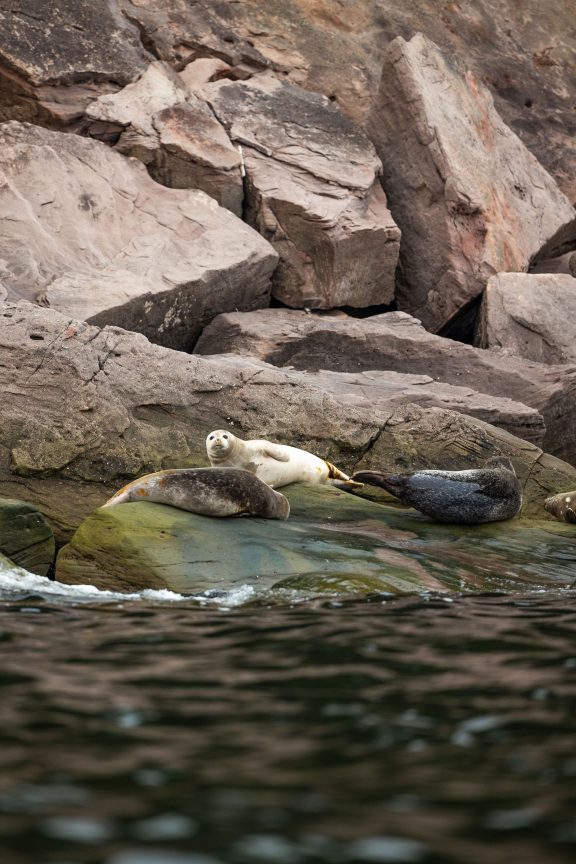
In the Gaspé Peninsula, the Forillon and Île-Bonaventure-et-du-Rocher-Percé national parks offer great observation opportunities, and they’re easily accessible from the Griffon Adventure Hostel. From the top of the cliffs along the coastline trails, you can see minke whales, dolphins and seals.
Of course, watching whales and other marine mammals by boat is very popular, whether you choose a cruise, a Zodiac tour, a kayak or a paddle board. So what’s the right watercraft for you? It all depends on the experience you seek.
On a Zodiac tour, you’ll be closer to the water and move swiftly to follow the whales, but you need to be a bit of a thrillseeker who can handle strong winds and and getting wet!
On a boat tour, like with Croisières AML, you’ll enjoy a more stable, comfortable experience, with covered areas, toilets, audio commentary and more space to move. If it’s comfort you crave or if you have young children, a boat tour is for you.
There’s also an interesting option that offers a nice compromise between comfort and closeness to the water: Croisières Neptune in Les Bergeronnes. Their hybrid watercraft, a combination of a Zodiac and a covered boat, offer the best of both worlds: you can move freely and stand while watching, plus they’re safe enough for children. When traveling at high speeds, the windows are closed to protect passengers from the wind and cold, but once they arrive, the windows open to offer an unobstructed view of the whales.
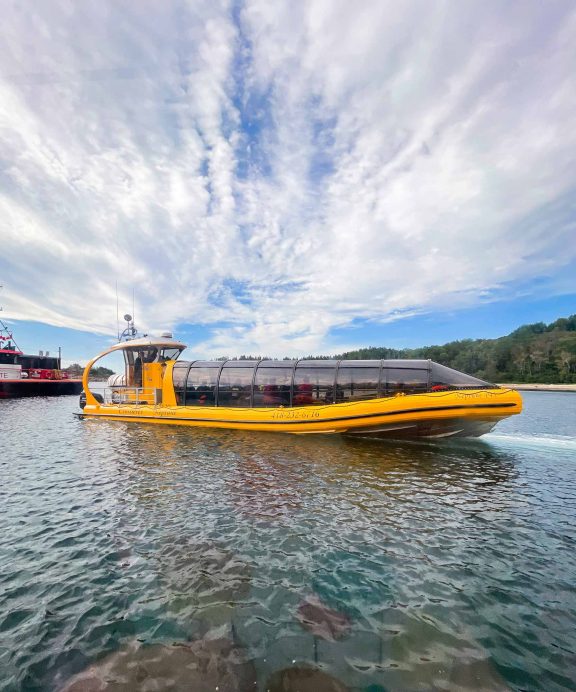
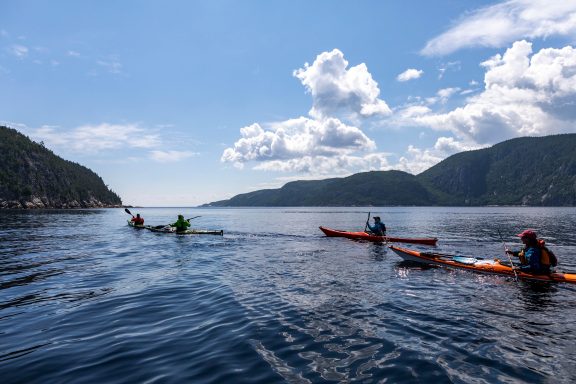
Kayaks or paddleboards offer the most immersive experience, especially for watching seals in Tadoussac (Mer & Monde Écotours) and Le Bic.
Whatever your option, try to go with a business that’s a member of the Alliance Éco-Baleine, like Croisières Essipit, which make sure to respect the animals. The guides know where to look, they recognize the the whale spouts and behaviours, and they can enrich the experience with their expert knowledge.
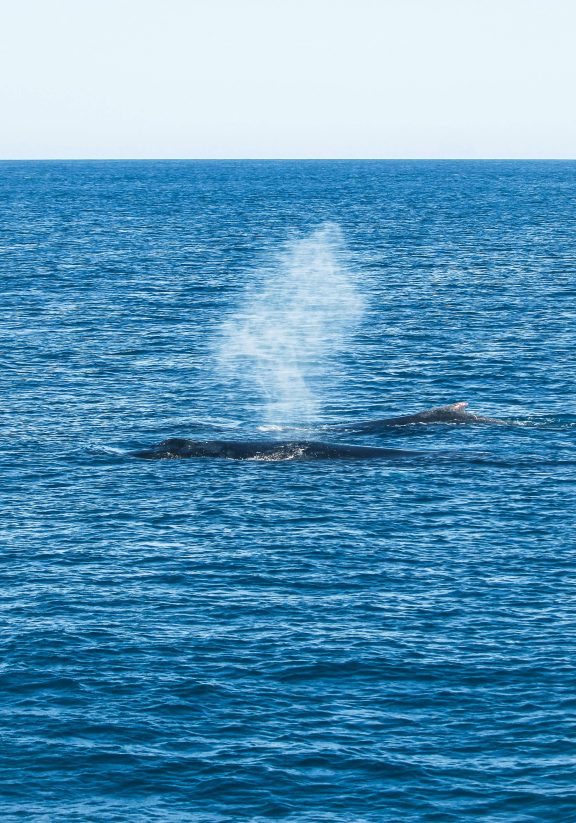
The key to watching marine mammals is to be patient and attentive. Diving seabirds can indicate the location of food, and thereby the likely appearance of nearby whales. If you hear a whale blow or see a fin pop above the water, stay alert for more!
If you’re watching seals on the beach, stay a good distance away and avoid quick movements: behaviour that’s too intrusive can annoy them and push them away for good.
Keep in mind that these are wild animals: sometimes they’re in plain sight and other times they’re nowhere to be seen. Don’t count on seeing a whale leaping out of the water in slow-motion like on TV. You’ll more likely experience a the profile of back sliding along the surface, a powerful whale spout, or a fin breaking the water. You’ll find that these are all remarkable moments that must be seen to be believed.
So are you ready to get out there and watch the water? 🐋